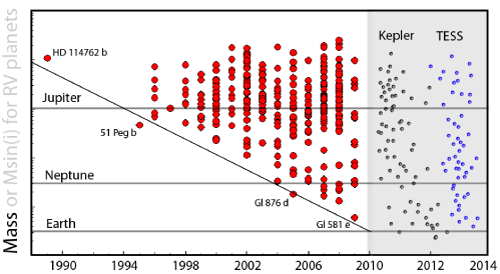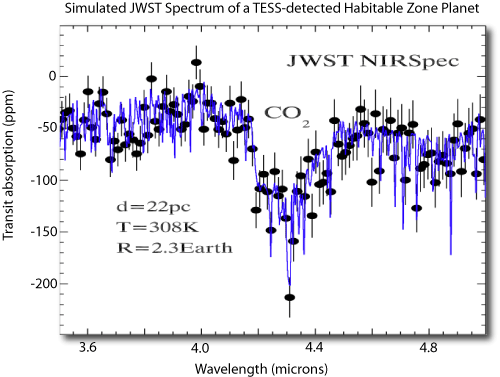
Earth occulting the Sun, seen from Apollo 12 (source).
The year 1995 fades into increasingly ancient history, but I vividly remember the excitement surrounding Mayor and Queloz’s Nature article describing the discovery of 51 Peg b. Back in the day, the idea of a Jovian planet roasting in a 4.2-day orbit was outlandish to the edge of credibility.
In the five years following the Mayor-Queloz paper, four additional Doppler-wobble planets with periods less than a week (Ups And b, Tau Boo b, HD 187123b, and HD 75289b) were announced. Each one orbited close enough to its parent star to have a significant a-priori probability of transiting, and by mid-1999, the summed expectation for the number of transiting planets grew to N=0.68. Each new planet-bearing star was monitored for transits, and each star came up flat. Non-planet explanations for the radial velocity variations gained credence. The “planets” were due to stellar oscillations. The “planets” were actually mostly brown dwarfs or low-mass stars on orbits lying almost in the plane of the sky.
The discovery of HD 209458b, the first transiting extrasolar planets was therefore a huge deal. Instantly, the hot Jupiters gained true planetary status. There’s a huge leap from a mass-times-a-sine-of-an-inclination to density, temperature, composition, weather. 209458 was the moment when the study of alien solar systems kicked into high gear.
At the moment, we’re within a year of getting news of the first Earth-mass planet orbiting a solar-type star. It’s effectively a coin flip whether the announcement will come from Kepler or from the radial velocity surveys. In either case, the first Earth will likely be too hot for habitability, but within a few years we’ll be seeing genuinely habitable, multi-million dollar worlds. Kepler, for one, will deliver them in bulk.

Enter the TESS mission.
Here’s the scoop: The TESS satellite consists of six wide-field cameras placed on a satellite in low-Earth orbit. If it’s selected, then during its two-year mission, it will monitor the 2.5 million brightest stars with a per-point accuracy of 0.1 millimagnitude (one part in ten thousand) for the brightest, most interesting stars. It will find all of the transiting Jovian and Neptune-mass planets with orbital periods of less than 36 days, and it can make fully characterized detections of transiting planets with periods up to 72 days. Where transits are concerned, brighter stars are better stars. TESS will locate all the bright star transits for Neptune-mass planets and up, and equally important, it will find the best examples of large transiting terrestrial planets that exist.
TESS also provides an eminently workable path to the actual characterization of a potentially habitable planet. Included in the 2.5 million brightest stars are a substantial number of M dwarfs. Detailed Monte-Carlo simulations indicate that there’s a 98% probability that TESS will locate a potentially habitable transiting terrestrial planet orbiting a red dwarf lying closer than 50 parsecs. When this planet is found, JWST (which will launch near the end of TESS’s two year mission) can take its spectrum and obtain resolved measurements of molecular absorption in the atmosphere.

If TESS is selected for flight, we’re literally just five years away from probing the atmospheres of transiting planets in the habitable zone.
